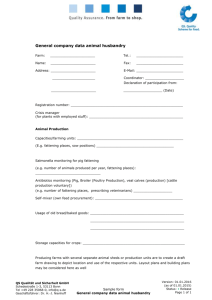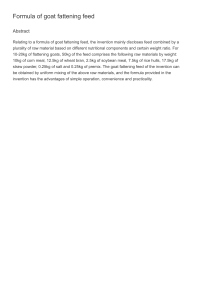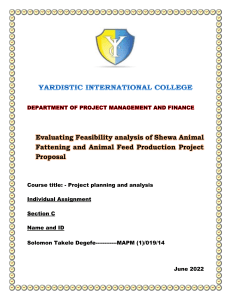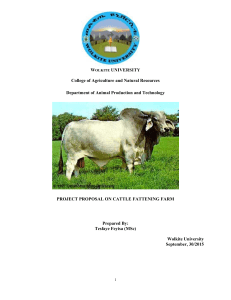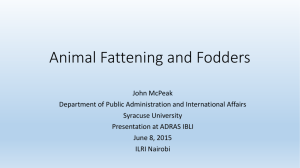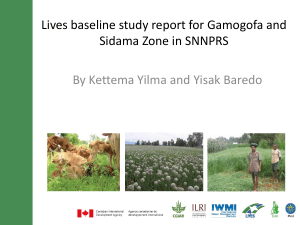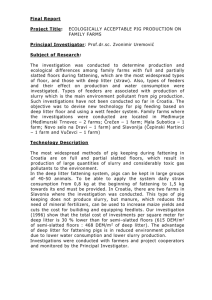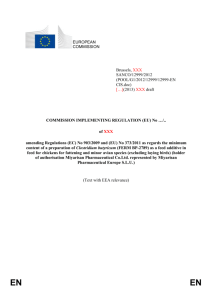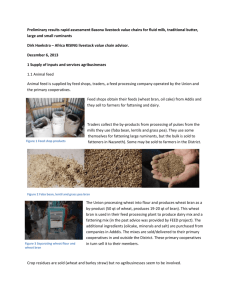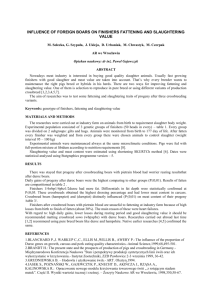Introduction to Animal Growth and Development
advertisement
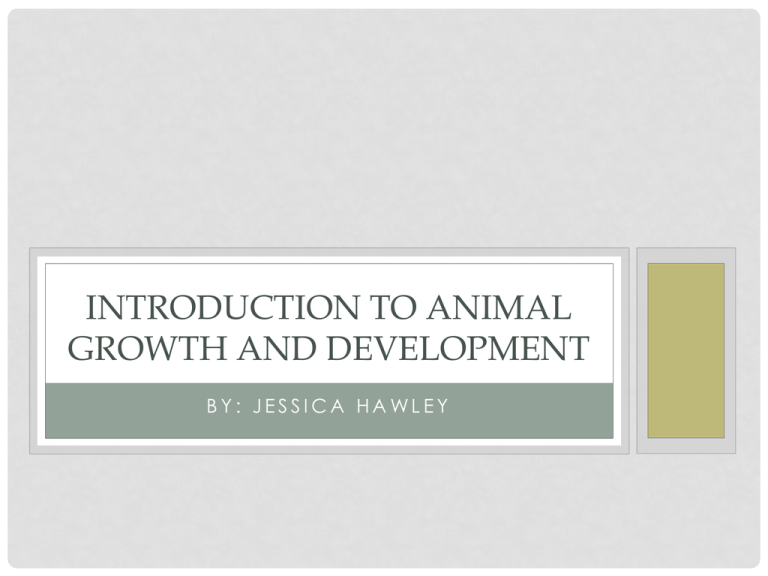
INTRODUCTION TO ANIMAL GROWTH AND DEVELOPMENT BY: JESSICA HAWLEY OBJECTIVES • Define growth • Explain the three ways growth can occur • Compare and contrast differences in true growth and fattening • Explain differences in animal growth from past and present WHAT IS GROWTH? • Fundamental to every living creature • The general or normal expansion of size as produced by the accretion of tissues similar to that of the original tissue or organ • Time Lapse Growth of Parakeets HOW CAN GROWTH OCCUR? • Hypertrophy • Increase in cell size • Hyperplasia • Increase in cell number • Accretion • A growth or enlargement by a gradual build up • Whole body growth does not occur independently • Individual cellular changes allow tissues and organs to assume different roles. TRUE GROWTH VS. FATTENING • True growth – increase in the amount of muscle and bone • Skeletal, Cardiac and Smooth muscle • Fattening – increase in the accumulation of fat • New calf has true growth • Fattening occurs at the end of a life stage WHY STUDY GROWTH? • By understanding the processes related to animal growth we can alter true growth and fattening as a result of growth rate • Subtle or substantial changes in growth and development of animals can directly impact animal productivity • Large Scale Production • What if animals ate fast food? HOW DO WE MEASURE GROWTH? • ADG-Average Daily Gain • This is the most common measurement • Weight at day X – weight at day 0 # of days on feed WHY WOULD WE WANT A FASTER GROWTH RATE • Goes to market sooner • Use less feed • More time to put on fate • Hopefully achieve a higher quality grade over the same period • All comes down to being more efficient! CATTLE 1950’S - PRESENT SWINE 1950’S - PRESENT SHEEP 1950’S - PRESENT OBJECTIVES • Define growth • Explain the three ways growth can occur • Compare and contrast differences in true growth and fattening • Explain differences in animal growth from past and present
